Fond du Lac Habitat for Humanity History
2024 – 180 Ledgeview Ave., Fond du Lac
2023 – 304 Joy Avenue, Ripon
2020 – W2689 County Rd HH, Malone
2019 – 437 E 2nd Street, Fond du Lac
2018 – 261 3rd Street, Fond du Lac
2017 – 501 Farwell Ave, Fond du Lac
2016 – 715 Park Street, Ripon
2016 – 471 W Division Street, Fond du Lac
2015 – 596 S. Main Street, Fond du Lac
2014 – 141 Hamilton Place, Fond du Lac
2013 – 120 Wolverton Avenue, Ripon
2013 – 16 S. Hickory Street, Fond du Lac
2012 – 357 4th Street, Fond du Lac
2011 – 541 Lake Street, Fond du Lac
2011 – 525 Montana Street, Fond du Lac
2010 – 459 S. Military Road, Fond du Lac
2010 – 245 7th Street, Fond du Lac
2009 – 35 W. Bank Street, Fond du Lac
2008 – 479 S. Military Road, Fond du Lac
2008 – 154 E. 21st Street, Fond du Lac
2007 – 511 E. 4th Street, Fond du Lac
2007 – 351 E. 3rd Street, Fond du Lac
2006 – 130 W. Division Street, Fond du Lac
2006 – 150 W. Division Street, Fond du Lac
2006 – 57 S. Royal Avenue, Fond du Lac
2005 – 838 Wisconsin Avenue, North Fond du Lac
2005 – 842 Wisconsin Avenue, North Fond du Lac
2002 – 11 Winnebago Avenue, North Fond du Lac
2002 – 428 Scott Street, Ripon
2001 – 846 Wisconsin Avenue, North Fond du Lac
2000 – 104 Hamilton Place, Fond du Lac
1999 – 169 W. Arndt Street, Fond du Lac
1998 – 141 Prairie Road, Fond du Lac
1998 – 137 Prairie Road, Fond du Lac
Habitat for Humanity International History
The idea that became Habitat for Humanity first grew from the fertile soil of Koinonia Farm, a community farm outside of Americus, Georgia, founded by farmer and biblical scholar Clarence Jordan.
On the farm, Jordan and Habitat’s eventual founders Millard and Linda Fuller developed the concept of “partnership housing.” The concept centered on those in need of adequate shelter working side by side with volunteers to build decent, affordable houses. The houses would be built at no profit. New homeowners’ house payments would be combined with no-interest loans provided by supporters and money earned by fundraising to create “The Fund for Humanity,” which would then be used to build more homes.
Beau and Emma were the owners of the first home built by Koinonia’s Partnership Housing Program. They and their five children moved into a concrete-block home with a modern kitchen, indoor bathroom and heating system, replacing the unpainted, uninsulated shack with no plumbing where they had previously lived.
In 1973, the Fullers decided to take the Fund for Humanity concept to Zaire, now the Democratic Republic of Congo. After three years of hard work to launch a successful house building program there, the Fullers then returned to the United States and called together a group of supporters to discuss the future of their dream: Habitat for Humanity International, founded in 1976.
The times have changed, the build site locations have grown in number, but the very real change that Beau and Emma’s family experienced is shared by families today who partner with Habitat to build or improve a place they can call home. Thanks in no small part to the personal involvement of U.S. President Jimmy Carter and his wife Rosalynn and the awareness they have raised, Habitat now works in all 50 states in the U.S. and in more than 70 countries and has helped more than 59 million people achieve strength, stability and independence through safe, decent and affordable shelter.

